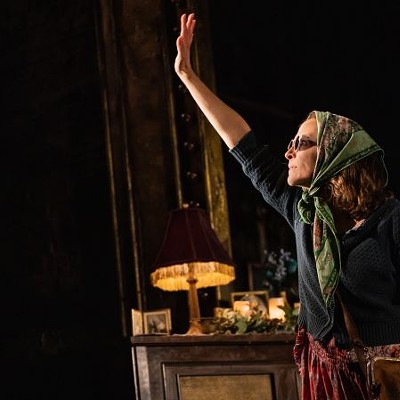The Setup: It has been 50 years since the passing of the Civil Rights Acts of 1964, prohibiting the discrimination of race, color, religion, sex, or national origin, which makes the Houston Museum of African American Culture's (HMAAC) presentation of African American Treasures from The Kinsey Collection all the more compelling.
The collection, Bernard and Shirley Kinsey's personal repository of historical artifacts and artworks, is a chronicle of the African American experience from the 1500s to today; it's a startling reminder that the Civil Rights Acts of 1964 was a momentous occasion hundreds of years in the making, but it's also a celebration of Black achievement and perseverance in the face of incomparable adversity.
Execution: The exhibit is composed of two sections. The first floor of the museum showcases the material record of slavery, the Civil War, Reconstruction, Jim Crow, and the Civil Rights Movement. As evidenced by the many written documents and facsimiles of book frontispieces, the history of the Americas includes an African presence since the fifteenth century.
Mexican Slave Trade Bill of Sale (1790) records the purchase of a slave named Jose Maria Montano for 60 pesos, reminding visitors that the Transatlantic Slave Trade encompassed four continents and spanned half the globe. The inhumanity of the whole enterprise is clearly seen by the iron shackles used to constrain a female slave circa 1850, the ankle braces close enough to restrict bipedal movement and cut into flesh. There's a letter from 1854 written by a slave owner informing his slave girl's next owner that she does not know she is being sold. In the letter, he vouches for her abilities as a chambermaid, and even though he knows her separation from her family will be distressing, the sale must happen in order for him to pay for his new horses and their stable.
And in an arrest proclamation from 1798, the state of North Carolina states that "any person may kill and destroy said slaves" in regards to two fugitive runaways. We do not know the fate of the two individuals, but it is clear that this America of old was one that did not honor the sanctity of life in respects to humans thought of as personal property.There are a few fragments of light in this dark history, however, such as the 1839 document in which Henry Butler buys his wife and four children from Mary Ann Graham for $100. A childbearing slave was valued upwards of $1,800 dollars at the time, so Graham's sale of Butler's wife and four children is tantamount to a gift, an act of kindness in a ruthless world of flesh-and-blood property exchange.
The second floor of HMAAC is devoted to the Kinseys' art collection, which encompasses noteworthy pieces from Black artists working in a wide-range of styles, from Impressionism to Cubism to Abstract Modernism. Some of the works are deeply concerned with representing the African American experience, while others are examples of formal, academic art void of social constructions, such as Ètude 17 en Couleur, an oil on canvass that sees a configuration of blue, purple, and black squares stacked on top of one another. Especially memorable are William Sylvester Carter's The Gambler (1990), a clear descendent of Picasso's deconstruction of the human form. Rather than nude women, Carter sets his eye on three gamblers, their bodies fragmented into shard-like quadrilaterals and enriched with an African-inspired color palette of reds, oranges, and greens. And I don't think there's anything in the collection quite as beautiful as the simplicity of William Tolliver's Farm Boy (1990), a painting that conveys dignity and necessity of manual labor through the image of a solitary young man created from glittering sand and bold strokes of silver.
The Verdict: Informative and insightful, HMAAC has presented the Kinsey Collection in an easily navigable exhibit that shows the inhumanity of slavery and racism, while also showing the pride and success of exceptional Black Americans and their lasting impact on history, art, and culture.
African American Treasures from the Kinsey Collection runs through October 26 at Houston Museum of African American Culture, 4807 Caroline. For information, call 713-526-1015 or visit www.hmaac.org.





